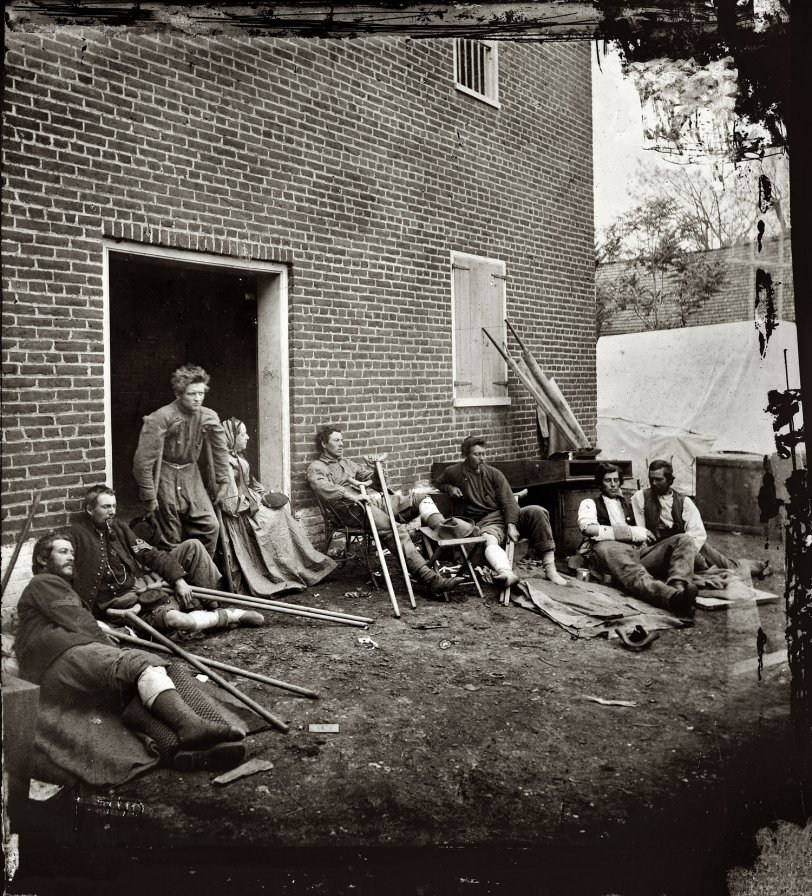


Framed or unframed, desk size to sofa size, printed by us in Arizona and Alabama since 2007. Explore now.
Shorpy is funded by you. Patreon contributors get an ad-free experience.
Learn more.

- Texas Flyer wanted
- Just a Year Too Soon
- WWII -- Replacing men with women at the railroad crossing.
- Yes, Icing
- You kids drive me nuts!
- NOT An Easy Job
- I wonder
- Just add window boxes
- Icing Platform?
- Indiana Harbor Belt abides
- Freezing haze
- Corrections (for those who care)
- C&NW at Nelson
- Fallen Flags
- A dangerous job made worse
- Water Stop
- Passenger trains have right of way over freights?
- Coal
- Never ceases to amaze me.
- Still chuggin' (in model form)
- Great shot
- Westerly Breeze
- For the men, a trapeze
- Tickled
- Sense of loneliness ...
- 2 cents
- Charm City
- What an Outrage
- Brighton Park
- Catenary Supports
Print Emporium
The Wounded: 1864

May 1864. "Kearny's men wounded at Fredericksburg." Wet plate glass negative, right half of stereo pair. Photograph by James Gardner. View full size.
Scottish Bond
Not just popular in Fredericksburg apparently, most old brick buildings here in Chicago are the same way, including my 2-flat which was built in 1914. I never knew the name for this style before, thanks!
Sergeant Major's Cross
The cross badge worn by the Sergeant Major (second man from left) was likely an insignia denoting that he was a member of the 6th Corps, Army of the Potomac. Original badges were generally worn on the top of the kepi, left side of the hat, or over the left breast. Issued enlisted men's badges were cut from colored material.
Philip Kearny
Phil Kearny was killed in action 18 months before this picture was taken. I guess his division kept his name.
Also, all these Fredericksburg photos show the brickwork to be done in Scottish Bond: one row of headers, then 5 rows of stretchers, repeat. It must have been popular with the local masons.
And we need a real Civil War expert to explain the cross on the 2nd man from the left. All the Kearny Crosses I've ever seen were metal, but this soldier seems to be wearing a cloth cross.
[His Wikipedia entry says cloth crosses. - Dave]
Kearny is credited with devising the first unit insignia patches used in the U.S. Army. In the summer of 1862, he issued an order that his officers should wear a patch of red cloth on the front of their caps to identify themselves as members of his unit. The enlisted men, with whom Kearny was quite popular, quickly followed suit of their own volition. Members of other units picked up on the idea, devising their own insignia, and these evolved over the years into the modern shoulder patch.
























On Shorpy:
Today’s Top 5